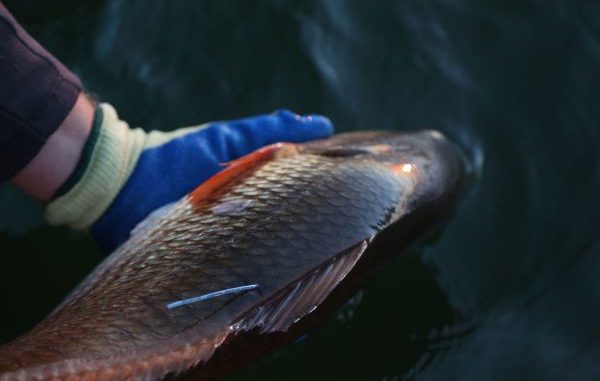
Volunteer anglers needed next week to capture fish, transport them to surgery boat
As part of an ongoing study of specks, redfish and bull sharks in Lake Pontchartrain, the Louisiana Department of Wildlife and Fisheries is hosting a fall acoustic telemetry event during the week of Nov. 16.
The department depends on volunteer anglers to catch the fish and transport them to a nearby LDWF surgery boat, where they will be weighed, measured, tagged with an external dart tag and outfitted with a surgically implanted acoustic tag.
Acoustic gates, or a series of overlapping receivers, are positioned near the Rigolets, Chef Pass and St. Catherine Pass to detect the fish as they seasonally move out of, and then hopefully back into, the lake.
To volunteer for the fall tagging event and receive more information via email from an LDWF biologist, click here.
Since the fall of 2012, data collected provides insight on migrational patterns, habitat use and how movement varies between the sexes. As part of the study, 218 speckled trout, 56 redfish and 18 bull sharks have been tagged, allowing the department to draw some interesting conclusions on their travels.
Trout movements appear most strongly influenced by salinity, which is lower in the lake in the spring, when tagged trout are observed leaving the lake from March through May. But the salinity rises in the fall, and trout begin returning in November.
“Many Lake Pontchartrain anglers reference ‘World Series trout’ because they begin to catch them around the time of the World Series baseball tournament, which occurs in late October to early November,” said biologist Ashley Ferguson. “The fall migration observed with the tagged trout correlates very closely with angler observations, lending legitimacy to the fable.”
Bull sharks are most influenced by water temperature, and are observed leaving the lake during winter.
Redfish, which have only been part of the study for one year, appear to move throughout system.
“They can be observed using all habitats in the lake but spend a majority of their time along natural shorelines,” Ferguson said. “We will be tagging additional red drum during this upcoming event to determine how their future behavior compares.”
Tagged fish that are part of this program have a blue tag. Researchers request that all tagged fish that are caught be released, but anglers are encouraged to call the number on the tag to report the date, time, location and health of the fish when it was caught.
Movement trends on acoustically-tagged fish can be seen online here.


